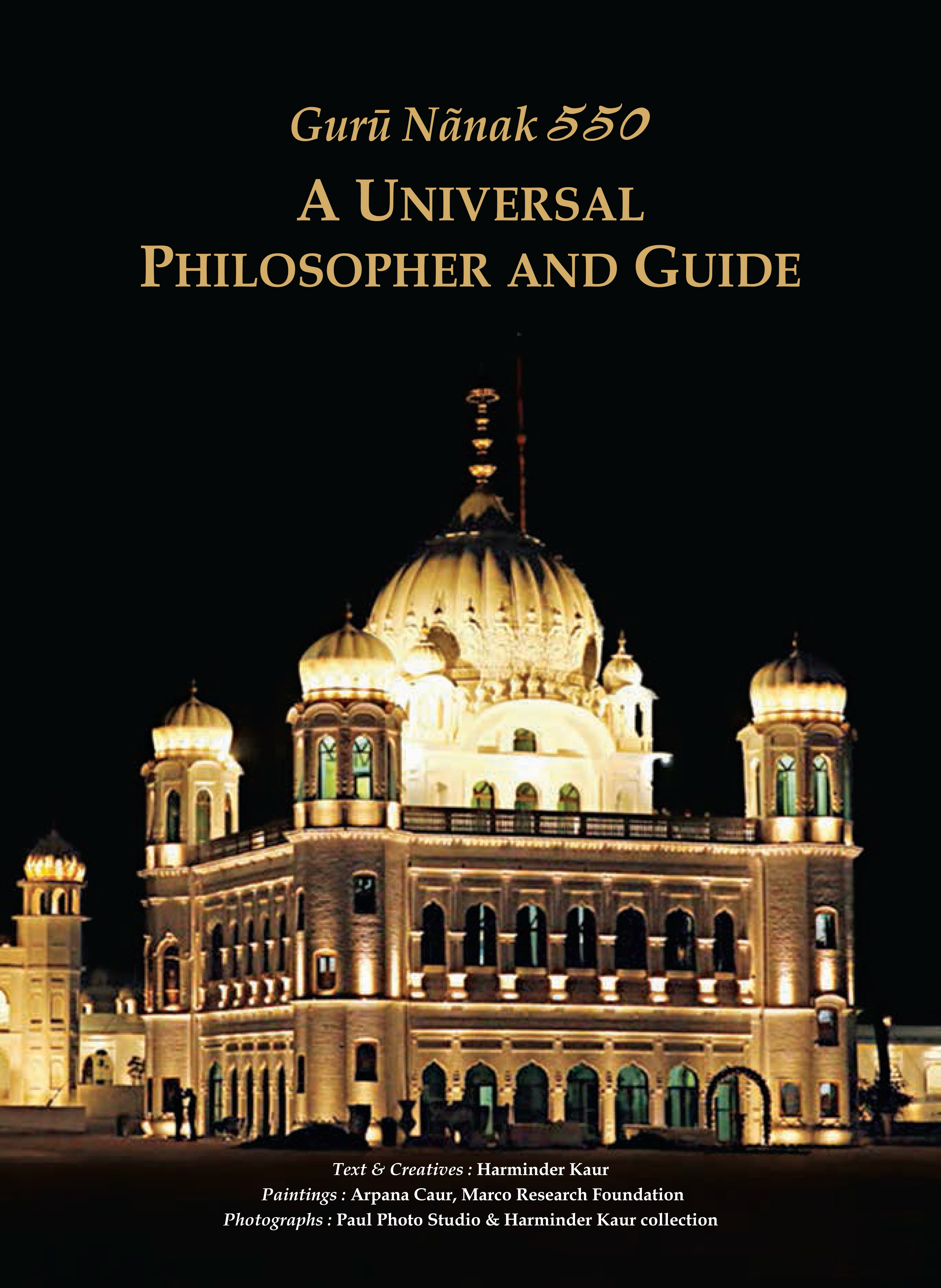
A write-up on a book that celebrates Guru Nanak
Date : 18/05/2024

(Author of the book: Harminder Kaur; Published by: Corporate Vision; Pages 120. Rs 690)
The book in coffee-table format is the story of Guru Nanak, the founder of the Sikh faith who was born in 1469 in Talwandi Rai Bhoe, now known as Nankana Sahib in Pakistan. He created the Sikh faith over 500 years ago that was furthered and developed by the nine Gurus that followed him and continues to be practiced as a vibrant religion by some 27 million people across the globe and retains its original vitality and dynamism.
The book traces the story of Guru Nanak from his birth to the end of his human life's journey called jyoti jot in Sikh religion that means when the soul of the Guru merged with the Creator and the light that illumined him passed on to his successor.
The book has a stunning cover picture and its 17-chapters are interspersed with beautiful illustrations and photos. The freshly shot photographs elaborately cover Sultanpur Lodi, where the Guru spent 14-years of his life. The photographs visit every place that was connected with his life and are present today in the form of commemorative Gurdwaras. It also covers the newly renovated Kartarpur Sahib where the Guru spent the last 18 years of his life to institutionalise his vision of equality and fraternal living. The illustrations cover the entire life span of the Guru. Many of them through paintings by famous painter Arpana Caur. The book also uses illustrations from the collection of her museum as well as from the collection of Marco Research Foundation.
Guru Nanak showed signs of saintliness from his childhood and the book recapitulates some incidents of his saintliness. The person to notice this first was Rai Bular a local village chief under whom his father, Mehta Kalian Das Bedi, worked as a revenue official.
Nanak was an amiable child and made friends with all. Hindus and Muslims, with children of high and low castes even though he was born in a society that had deep fissures.
The Hindus had a caste system that treated a large mass of people beyond the pale of social interaction. The Muslims unleashed untold miseries upon people. Guru Nanak was a witness to the injustices perpetrated by the Lodis and then Babur, the Moghul. They demolished temples, ransacked cities. Babur put the garrison to the sword, people were taken into captivity, women raped and families turned homeless. The book has all the four hymns that have come to be known as Baburvani that record the atrocities committed by this Moghul.
These issues bothered Nanak deeply. Even as a child he was often seen sitting alone in deep contemplation as though he was in search of something. His mystic experience provided him the answers. That the universe was created by One Father-God. That the Divine order demanded that people should live in harmony and the fact that there were such miseries in the world showed people had moved away from the Truth called God. He showed the people the way to reconnect with God.
The book briefly touches upon the Bhakti movement and its role in providing concern for social justice but goes on to say that while Nanak carried forward the good work done by the Bhakti movement his vision of the world was much larger in its ideational spectrum. Guru Nanak also showed concern for equality between man and man and man and woman as well as deep concern for environment.
The last two issues did not even stir human consciousness until about the 20th century. Thus Guru Nanak introduced many new elements that were characteristically his own. He created his religious ethos by institutionalising his beliefs, especially on ethical life, equality and fraternity during his life-time which empowered contemporary trends with wholly new possibilities.
The book provides details of Nãnak's mystic experience in Sultanpur Lodi after which he gave up his job and began his travels first within Punjab then to the east, south, north and west in that order to spread the Divine Word that there is one God and the entire universe was created by one Father-God. The book gives details of how Guru Nanak instilled God-consciousness among people through simple logic and the message in each incident.
In this commemorative work on the life, philosophy and times of Guru Nanak the book explains the methods used by the Guru to change people to develop God-consciousness. It celebrates the extraordinary feat of an extraordinary man who travelled for 21 years on foot and covered thousands of kilometres to spread his message of Oneness of God.
It has been the author's endeavour not only to trace the socio-political background in which Guru Nanak was born but also to evoke the great spiritual energy that comes from the kind of God-consciousness he expects his followers to seek. His vision gives us a new way to look at fellow human beings and His entire creation. It helps us open our minds without limitations. In this path there is the vastness of His creation from which human beings seek an all-powerful, all-pervasive Divinity that is obtainable by each worshipper.
Tags :
Note: Your email address will not be displayed with the comment.